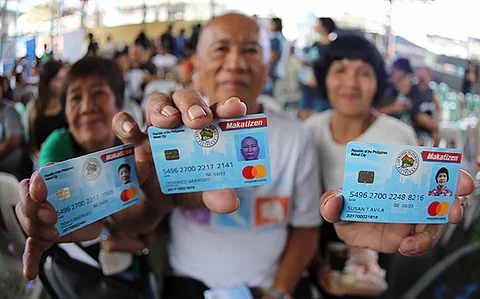
- NEWS
- the EDIT
- COMMENTARY
- BUSINESS
- LIFE
- SHOW
- ACTION
- GLOBAL GOALS
- SNAPS
- DYARYO TIRADA
- MORE

Tracing its roots to 1670, the Philippines’ financial center marks its 355th founding anniversary today, 1 June, with the celebration of Araw ng Makati. This annual observance is more than a commemoration — it is a testament to the city’s transformation from farmland to financial powerhouse.
Makati’s early centuries were pastoral, its communities surrounded by rice fields and rivers. But the 20th century brought dramatic changes, culminating in its designation as a highly urbanized city in 1995 — a nod to its growing economic clout and national importance.
Today, its imposing skyline and bustling business districts distinguish Makati for the metropolis it has become. Yet, beneath the gloss of glass towers, pockets of old-world charm remain — particularly in Poblacion, the city’s original settlement — providing a tangible link to its past.
Makati Day celebrations reflect this balance of heritage and modernity. Residents and visitors are treated to cultural performances, art exhibits and film screenings, all aimed at showcasing the city’s vibrant identity and forward-looking spirit.
Leadership that delivers
Makati’s recent achievements are tied closely to the leadership of outgoing Mayor Abby Binay. Her administration has earned praises for expanding access to healthcare and education, modernizing infrastructure and promoting sustainability.
Under Binay, Makati continued to offer free healthcare to its residents — a policy that recently earned the city international recognition. According to the Numbeo Health Care Index, Makati ranked fourth globally in the first quarter of 2025, the only Philippine city on the list. With a score of 85 out of 100, it outperformed cities in Europe and North America and tied with Chiang Mai, Thailand. Only three Taiwanese cities — Kaohsiung, Taipei and Taichung — ranked higher.
Investing in education, accessibility
Education has also been a key priority. Public school students receive free uniforms and school supplies — long a hallmark of Makati’s welfare programs. Recently, the city added another initiative: six brand-new school buses providing free rides for public school students.
The buses serve key routes in central barangays, with GPS tracking systems and ID-based boarding to ensure safety and efficiency. The program aims to improve attendance and ease commuting costs for low-income families.
Its local government has also invested in digital learning and upgraded school facilities to support students’ holistic development.
Building a greener future
Infrastructure and sustainability are at the heart of Binay’s development agenda. Her administration passed the landmark Solar Energy Systems Ordinance, which encourages the adoption of solar power in homes and businesses.
The ordinance provides incentives such as real property tax exemptions for solar installations and streamlines the permitting process. It allows roof-, wall- and ground-mounted solar systems across all zoning districts and exempts them from building height and floor area ratio restrictions.
Recognized for governance and preparedness
The drive for excellence in governance has not gone unnoticed. Makati City recently earned the Department of the Interior and Local Government’s Seal of Good Local Governance and the Gawad KALASAG Seal of Excellence from the National Disaster Risk Reduction and Management Council.
For the third year running, the city also received the NDRRMC’s “Beyond Compliant” rating and was named Best Government Emergency Management Team (GEMs) for Metro Manila.
“These recognitions reflect our commitment to good governance, disaster readiness and continuous improvement,” Binay said.
Looking ahead
As Makati celebrates more than three centuries of growth, it continues to embrace innovation while honoring its roots. With a cosmopolitan population, thriving economy, and progressive policies, the city remains a model of urban development.
What began in 1670 as a riverside settlement is now a global player — proof that with vision and leadership, transformation is not just possible, but inevitable.
